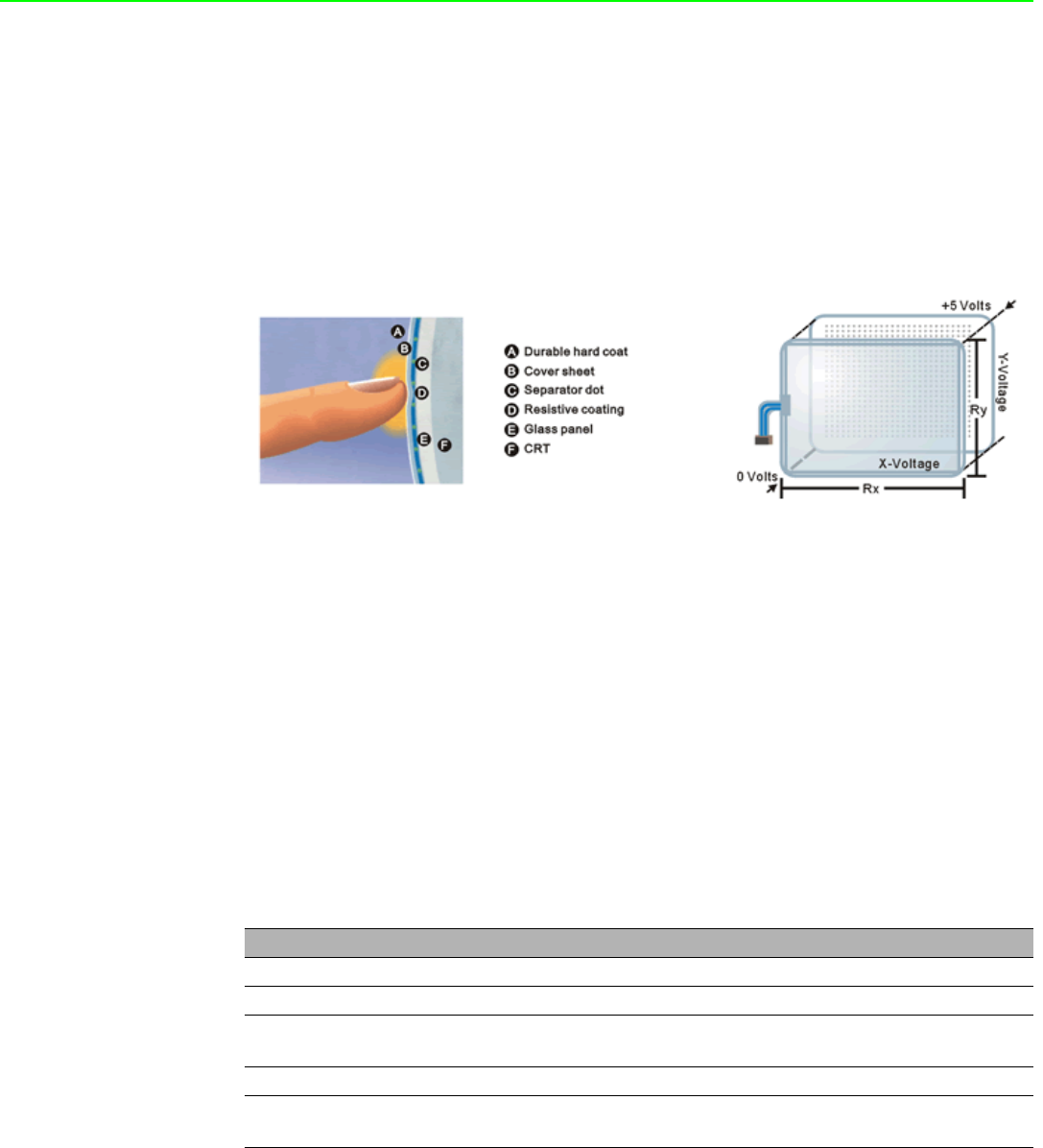
FPM-8192V/8232V User Manual 4
1.2 Touchscreen Solution (Optional)
1.2.1 Five-Wire Resistive Touchscreen (Optional 1)
Introduction to Five-Wire Resistive Touchscreen
The five-wire resistive touchscreens use a glass panel with a uniform resistive coat-
ing. A thick polyester coversheet is tightly suspended over the top of the glass, sepa-
rated by small, transparent insulating dots. The coversheet has a hard, durable
coating on the outer side and a conductive coating on the inner side.
When the screen is touched, the conductive coating makes electrical contact with the
coating on the glass. The voltages produced are the analog representation of the
position touched. The controller digitizes these voltages and transmits them to the
computer for processing. The five-wire technology utilizes the bottom substrate for
both X and Y-axis measurements. The flexible coversheet acts only as a voltage-
measuring probe. This means the touchscreen will continue working properly even
with non-uniformity in the cover sheet's conductive coating. The result is an accurate,
durable and reliable touchscreen that offers drift free operation. The touchscreens
are sealed against contamination and moisture. The coversheet is sealed to the
glass substrate with an industrial grade caulk. This prevents wicking of fluid between
the coversheet and glass. Also, the touchscreens are not air vented, thereby prevent-
ing fluid ingress through an air vent.
Brief Specifications
Subject Details
Input Method Finger, gloved hand, or stylus activation
Positional Accuracy Standard deviation error is less than 0.080 (2 mm)
Resolution Touchpoint density is based on controller resolution of 4096 x
4096
Touch Activation Force Typically less than 4 ounces (113 grams)
Light Transmission HL products: 80% +/–5% at 550 nm wavelength
Enhanced products: 60% +/–5% at 550 nm wavelength


















